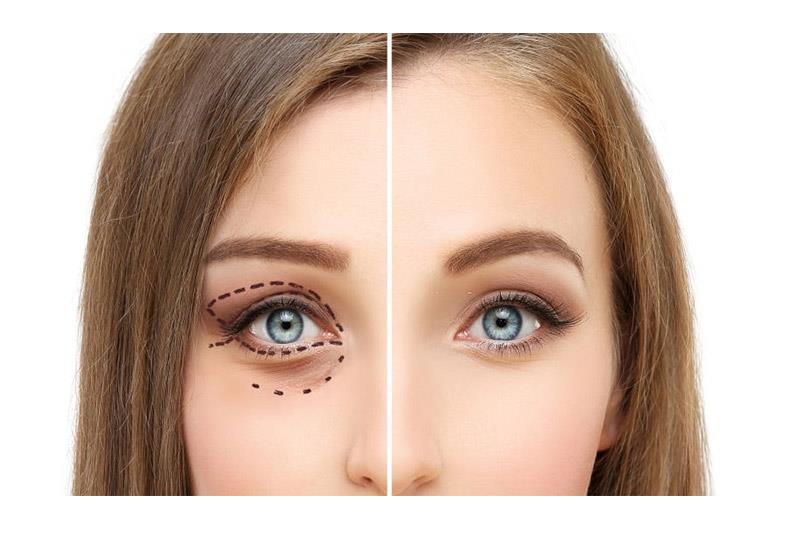
Eyelid surgery (blepharoplasty), like all surgeries, includes a post-operative recovery period. Knowing what to expect after surgery is as important as knowing the surgical Blepharoplasty process.
Patients undergo eyelid surgery on an outpatient basis or with an overnight stay in the hospital. The surgeon will decide on the appropriate option according to the specific conditions of the patient. Hospitalization may be required after eyelid surgery. The best environment for recovery will be determined based on patient and physician preferences.
At the beginning of the healing period, patients can expect some redness and swelling around the incision areas. The eyes may be excessively watery. The eyelids are usually stiff and accompanied by pain. Any dryness that occurs in the eye area can be relieved with an ointment that the surgeon provides to the patient. However, patients may experience temporary dizziness due to the use of the ointment. In general, temporary drooping is one of the most common side effects of eyelid surgery. Recovery can also include temporary sensitivity to light.
An adult must stay with you for at least 24 hours after surgery.
For 48 hours after surgery, you should keep your head elevated or place two pillows under your head while resting.
Take prescription painkillers before you feel pain. It is easier to prevent pain than to control it.
Limit your activities on the day of surgery and for a few days after. It usually takes 7 to 10 days to return to normal and resume vigorous physical activities.
Use an ice pack on the surgical area.
You may feel dizzy if you suddenly get up from a lying position or sit down. After surgery, if you are lying down, sit for one minute before standing. Stand slowly to find your balance. If you feel dizzy while sitting or standing up, you should lie down immediately to minimize the possibility of fainting.
Care after eyelid surgery
During the first week after surgery, patients should avoid any activities that may cause dry eyes, including reading, watching TV, wearing contact lenses, and staring at a computer screen. Swelling and bruising can be minimized by keeping the head elevated as much as possible during the first few days of recovery. Patients may be able to resume their normal activities around the 10th day of recovery.
In the first few weeks after surgery, it is recommended to wear sunglasses to prevent eye irritation from sunlight and wind. Patients may notice that their eyes tire easily in the first few weeks; For this reason, doctors recommend taking a nap.
During the first 3 to 4 weeks after surgery, any activity that increases blood flow to the eyes should be avoided, including bending over, lifting heavy objects, sports activities, and even crying. The doctor will tell the patient when any exercise regimen can be resumed.
Care of the incision site
Skin incisions should be washed three times a day with soap and water from the day after surgery. This should be done very gently and then dry the cut. After drying, the cut areas should be cleaned with an ear cleaner soaked in 50% hydrogen peroxide 3% and 50% water. Then these areas should be continuously covered with antibiotic ointment. If you don't have antibiotic ointment, a thin layer of Vaseline will also work. The cut areas should be allowed to dry and peel off.
Using eye drops for each eye once every few hours will moisturize and refresh the eyes. Showering on the day after surgery is not an obstacle. Be gentle when washing and drying your face so as not to damage the surgical area or the stitches. If you have had a brow lift or a facelift, the stitches are placed in the incisions made in the hairline. You must be careful not to pull these stitches out when combing your hair.
6 weeks after surgery, using vitamin E or cocoa butter and gently massaging the cut areas can make the scars less noticeable. The incisions will naturally be red for a few months but will gradually disappear. Incisions can be hidden with cosmetics 10 days after surgery. The incision site should not be exposed to direct sunlight for 6 months after surgery. It is necessary to use sunscreen on all cuts.
diet
After general anesthesia or intravenous sedation, you should initially use clear liquids. During the next few days, it is very important to eat foods rich in calories and protein. Feeding should be done regularly. Avoid dehydration by drinking enough fluids. Consuming fluids prevents nausea and vomiting. Try not to skip any meals. If you continue this process, you will feel better, regain your strength, experience less pain and heal faster.
Decreased activity may increase constipation, so it is better to add fruits to your diet and increase fluid intake.
The duration of the recovery period
Recovery after eyelid surgery usually takes a few weeks. The stitches are removed within two days to one week. In the first week, patients should rest a lot. The redness and swelling that occurs after blepharoplasty will disappear over time. Recovery also means avoiding anything that increases blood flow to the eye.